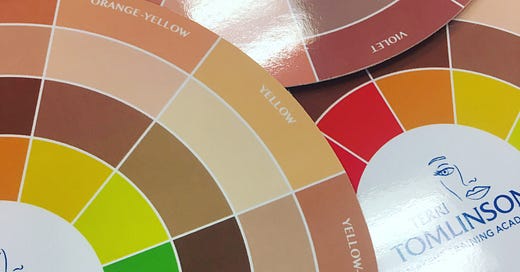To Conceal or To Correct?
What is the difference between concealing and correcting? Is one better than the other? Do we need to do both?
I see it in the makeup chat groups and hear it from my private clients. They are using a corrector to neutralize under the eyes, then applying concealer, then powder to “set”. They all have the same issue. They all want the magic trick that will keep their makeup from creasing or looking heavy under the eyes.
I know what that magic trick is.
Use Less.
That is it. Use less. But it isn’t always that easy to do because there is so much misinformation around makeup and application. The question I like to ask in these cases is why someone is using a corrector and a concealer? You would think I’d get a plethora of answers about why someone needs 2 cream products and powder under the eyes, but I don’t. I usually hear one thing.
“The corrector neutralizes and then I use the concealer to brighten.”
There is much wrong with this concept and it is the reason so many under eyes are creasing and moving around. I think we need to talk about what a concealer does and what a corrector is for.
Time for some Makeup101!
Let me begin by saying that I really don’t like the way the word “brighten” is used in makeup today. I think I will save that rant for another post however, because we have to address the elephant in the room first. And that is…
What is a Concealer?
A concealer is a product that is used to provide coverage. Coverage is dictated by how much opacity something has, how much shows through it. So, a sheer makeup has very little coverage because it does not have much opacity. Sheer products are formulated to be transparent. A fuller coverage makeup will cover more imperfections because it is built with more pigment and therefore, opacity.
Keep reading with a 7-day free trial
Subscribe to Makeup Lessons & Color Theory to keep reading this post and get 7 days of free access to the full post archives.



